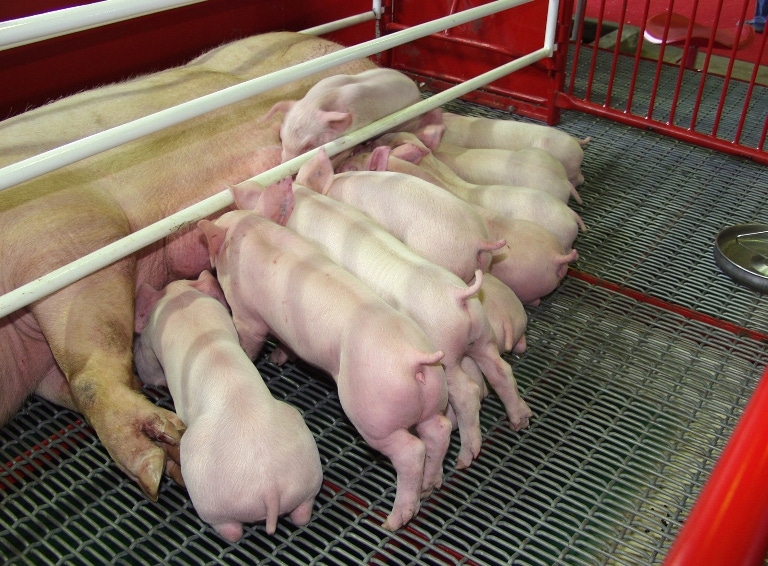Heavier at birth, better performance as a replacement gilt
It appears that there is a minimum birth weight below which it is unlikely successful reproduction will occur on a consistent basis for gilts.
October 22, 2018

By W.L. Flowers, North Carolina State University Department of Animal Science
Development of gilts is a long-term investment because it typically is about a year before production data is available to determine whether the decision to keep them as replacements was correct. Identification of physiological benchmarks that are predictive of their adult reproductive potential early in their lives would have both performance and economic implications for most production systems. Swine are litter-bearing species and, as a result, they always are subject to the consequences associated with intrauterine growth restriction: a phenomenon which has been shown to have significant negative effects on nearly all physiological systems including the development of reproductive organs.
Because the majority of fetal weight gain occurs during the last 30 days of pregnancy it is physiologically reasonable to assume that birthweight should be positively correlated with development of reproductive organs and adult reproductive performance. Evidence that this assumption is correct is shown in Figure 1.

Figure 1: Relationship between birthweight and sow longevity estimated by the proportion of females that produced six litters. Data presented were collected from 400 gilts in each birthweight category and began when they were delivered to a commercial sow farm (Entry). The proportion of gilts with birthweights less than 2.5 pounds that farrowed their first litter was significantly lower (p < 0.01) compared with their heavier contemporaries and remained low through their sixth parity.
In this study, birthweights were recorded; management conditions were standardized afterwards; and lifetime productivity was measured. The highest reproductive performance consistently was achieved in sows that had the heaviest birthweights. A reasonable explanation for this observation is that gilts with heavier birthweights were subjected to less growth restriction and had increased organogenesis than their lighter counterparts. This advanced neonatal development, in turn, resulted in more productive and efficient ovaries and uteri which, in turn, contributed to their improved reproductive performance as adults.
These data illustrate the potential that birthweight has for use as an early indicator of adult reproductive potential. However, what is not known at the present time is whether this relationship is linear, quadratic, asymptotic or some combination of these and whether it is consistent across all genetic lines and production systems. Nevertheless, it appears that there is a minimum birth weight below which it is unlikely successful reproduction will occur on a consistent basis for gilts.
In the herd from which these data were collected, this minimum appears to be about 2.5 pounds because nearly 60% of bred gilts from this group failed to farrow their first litter. Consequently, use of a minimum birthweight as an early selection criteria for future reproductive performance appears to warrant strong consideration. It is important to recognize that there probably are quantitative differences among herds in terms of what constitutes high and low birth weights.
However, qualitatively it would be surprising if there wasn’t a similar overall positive correlation in most production systems.
You May Also Like



